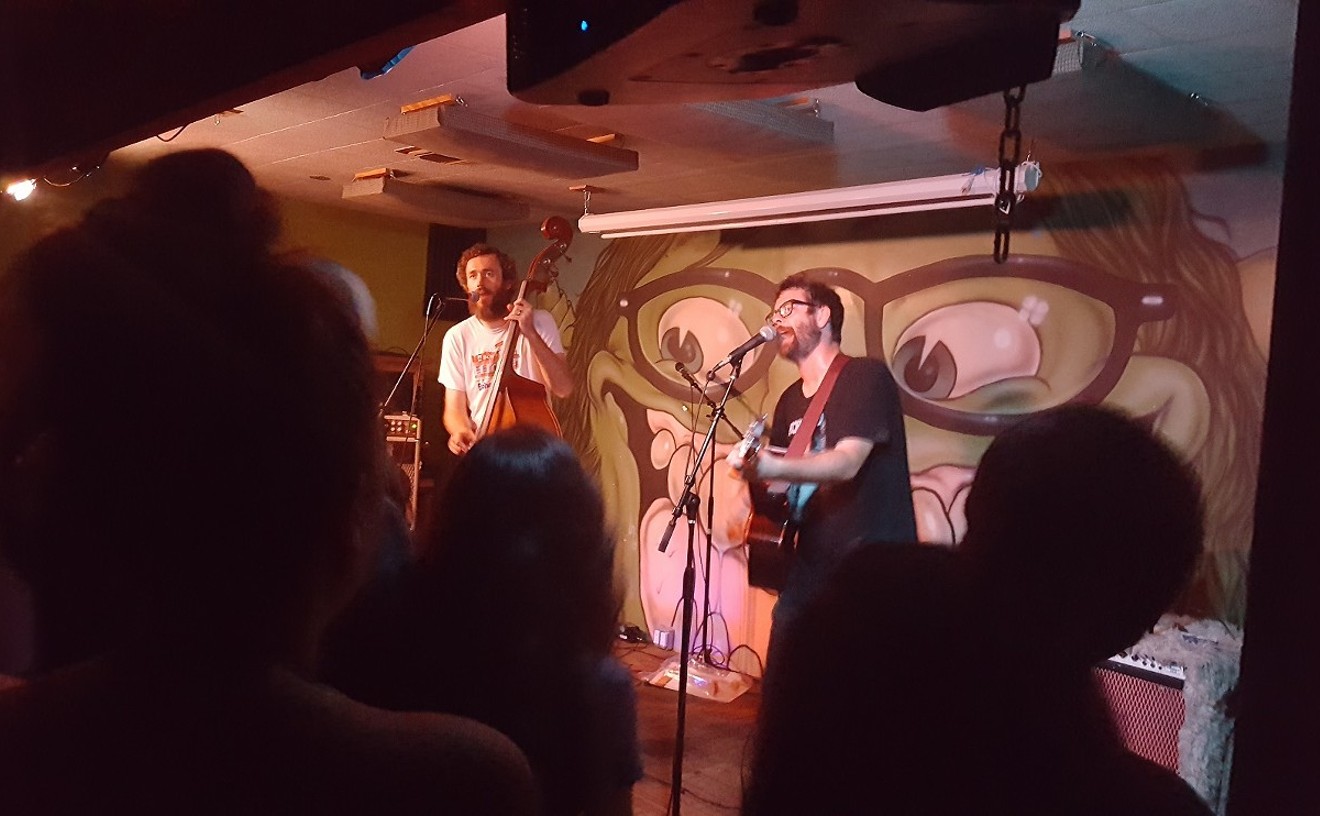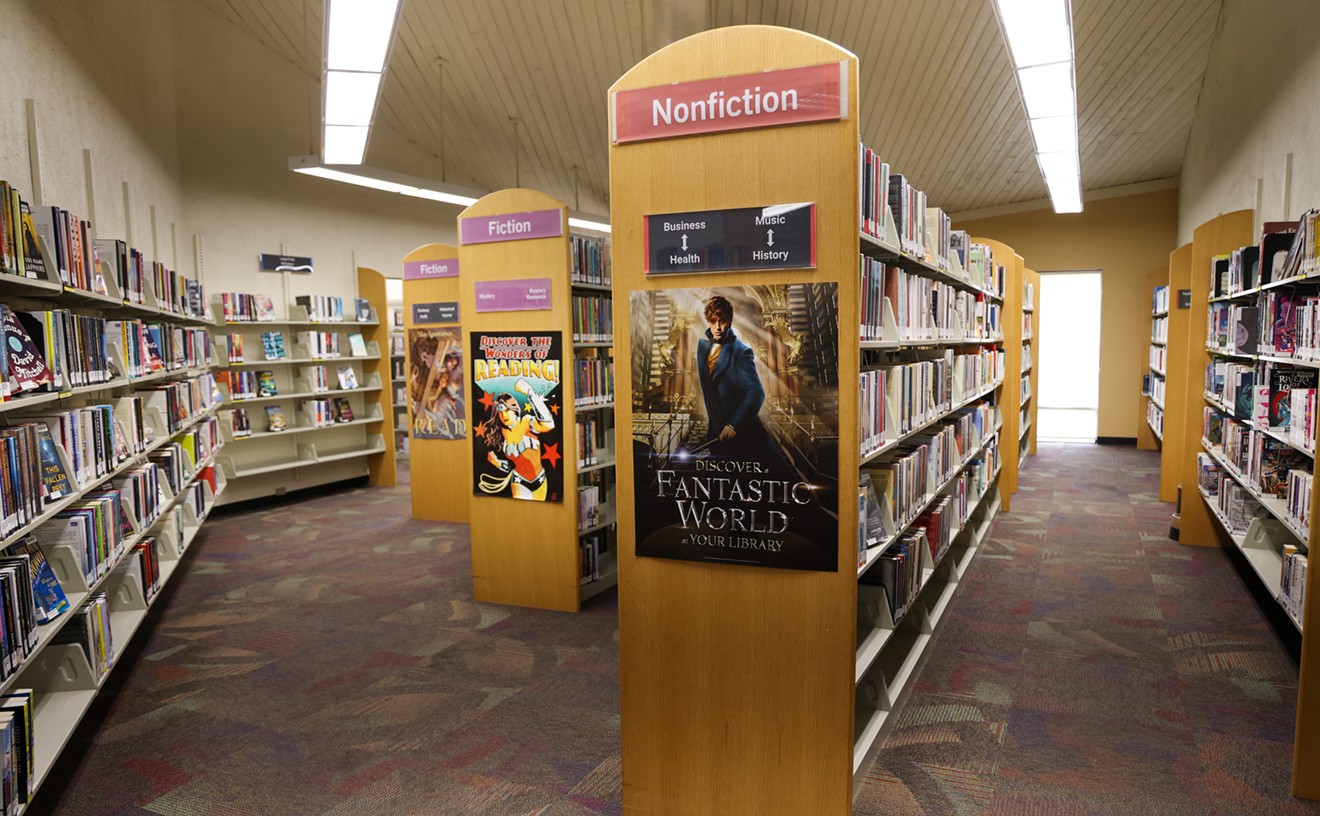But now, some Arizona creatives are facing an uncertain future.
On Tuesday, September 5, Attorney General Jeff Sessions announced that the Trump administration is repealing the Deferred Action for Childhood Arrivals program, known simply as DACA.
The program, established by President Barack Obama in 2012, allowed undocumented immigrants brought to the U.S as children to remain in the U.S. And it let them apply for work permits.
About 800,000 people, often called “dreamers," were covered under DACA. Nearly 28,000 of them live in Arizona.
It’s possible the U.S. Congress will craft legislation to restore DACA protections. Trump gave them a six-month window before he takes action.
In the meantime, local creatives are paying close attention. That’s because DACA is more than a theoretical issue or rhetorical foil. It affects actual people, including several making art right here in Phoenix.
“We’ve seen many DACA recipients in art schools and exhibits in the community,” says Sara Cochran, director and chief curator for Scottsdale Museum of Contemporary Art. “Their voices are important in our community, and they would be missed,” she says of possible Dreamer deportations.
“These artists add a richness of experience to arts and culture, and many have incredible talent and drive,” Cochran says. “So the thought of losing them is poignant.”
Immigrants have always played a key role in America’s cultural landscape, says Cochran, who emigrated from Scotland.
Consider the case of Paolo Soleri, who emigrated from Italy and became one of the 20th century’s most influential architects and artists. The first North American retrospective of his work since 1971 opens at Scottsdale Museum of Contemporary Art in October.
“Soleri was naturalized, and very proud to be an American," Cochran says.
Of course, heated debates over immigration aren’t new to Arizona.
“This isn’t the first time something like this has happened,” Phoenix artist Marco Albarran says of the DACA repeal.
Albarran was born in Sonora, Mexico, and moved with his family to Arizona in 1976. He founded CALACA, an organization dedicating to preserving and promoting Latino and indigenous cultural arts, in 2004. Today, he serves as executive director.
He's spent years decrying systemic racism in Arizona, including legislation that helped put Arizona on the map.
Back in 2010, then-Governor Jan Brewer signed a bill called SB 1070 into law. In effect, it endorsed racial profiling undertaken by Joe Arpaio, Maricopa County Sheriff at the time.
Ultimately, Arpaio was convicted in federal court for criminal contempt related to SB 1070, but President Trump issued a pardon in August before sentencing was handed down.
“The DACA decision is racism on a bigger scale,” Albarran says. “SB 1070 was a state law, but DACA impacts immigrants across the country.”
For Albarran, the DACA repeal is a call to action.
“We pass all sorts of laws to protect people, but then everyone just forgets about them,” he says. “Now, this DACA decision is going to activate a whole new generation.”
Like Albarran, gallerist Lisa Sette views the DACA repeal in a broad historical context.
“Arizona has embarrassed me before politically with SB 1070, but now it’s on a national scale,” Sette says. “I’m apoplectic."
Several artists represented by Lisa Sette Gallery have created work addressing immigration and the U.S.-Mexico border. One particularly poignant photograph by Mark Klett shows a small bit of border fence set within a vast desert expanse.

Mark Klett, Fence separating the US/Mexico border south of the Gila Mountains, May 2015. Pigment print, edition of 20, Available in three sizes: 23 x 30.5 inches, 26 x 35 inches, and 37.5 x 50 inches1 / 6.
Mark Keltt/Courtesy of Lisa Sette Gallery
The immigration issue hits home for Sette.
“Three of my grandparents didn’t speak a word of English, but they owned businesses and paid taxes,” she says. “I don’t understand why a porous border for law-abiding people who contribute isn’t a plus.”
She’s quick to praise immigrant values, and the essential role immigrants play in American arts and culture.
“To me, the strength of our country is that it’s made up of so many different people, and what holds them together is their values,” she says. “Dreamers have the same values as other good Americans.”
But there’s something else worth noting.
“So many artists draw on their heritage for what they want to say, which helps us see things from different perspectives,” she says.
Those perspectives were on full display on Wednesday, September 6, as spoken-word poet Tomas Stanton worked with Phoenix high school students.
“Today in particular, a lot of the poetry lent itself to different immigration stories,” Stanton told Phoenix New Times that day. “This weighs heavy on my heart, because DACA is being used as a political pawn, but it affects real people."
Stanton says several Arizona artists will be affected if the DACA repeal sticks.
“I have countless numbers of collaborators, friends, and fellow artists who are part of the DACA program,” Stanton says. “Everyone is tired and exhausted from the fight.”
He’s hoping others will rally to support the cause, by paying more than lip service to the issue.
“Dreamers don’t need allies now as much as they need accomplices who will put their bodies on the line to make sure people aren’t removed from our communities.”














